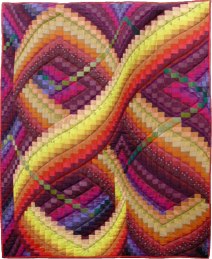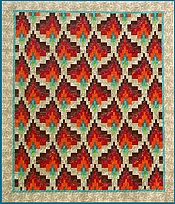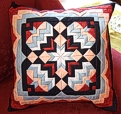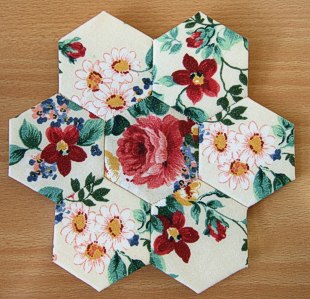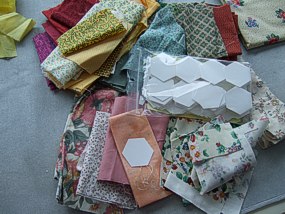In my last posting about this project, I was searching for a suitable border fabric. I tried several colours, including some that were suggested in the comments to that post, but in the end I chose the green one.

My plans were to make this into a round pillow, so at first I cut a piece that was a bit larger than the pieced hexagons.

The papers were still in the outer row of hexagons, so I pinned next to the outer ring all around, and then tacked down each corner of the outer hexagons.

Then I sewed the outer edge of the hexagons to the border fabric, – a bit like appliqueing.
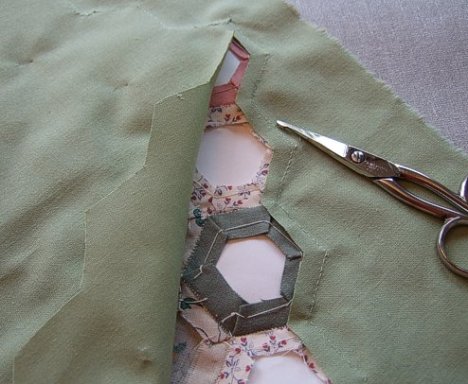
When I had finished sewing all around, I cut away the centre part of the border fabric.

When cutting through only one of several layers, I always use my duckbill scissors. The bill shaped tip goes underneath, and keeps the scissors from cutting into the layers below. (The scissors are actually hand made, and I bought them at a quilt show at Ascot in the UK 15 years ago, – they still work fine).
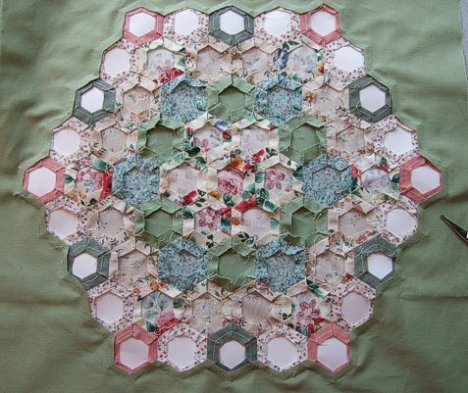
When the centre of the border fabric had been cut away……..

……….. removing the last round of papers was easy.

After that, I layered and pinned the quilt top…….

……… before I committed the deadly sin of machine quilting it. My hands do not agree with hand quilting, so although I hope for forgiveness, I cannot promise not to do it again.

The quilting was very simple, – just one seam for every circle of patches, and then an echo seam into the border.

Then I made a back piece for the pillow, with a hidden zipper in the centre.

Next, I marked the circle on the pillow, using what I call “the poor man’s compass”: a pencil on a string…..

….. and then cut out the circle.

The circle was placed right sides together on to the back piece, pinned, and sewed all around the edge. Luckily I remembered to open the zipper before sewing.

After that, the back piece was cut even with the front, the raw edges were zigzagged, right sides were turned out through the unzipped opening, and…..
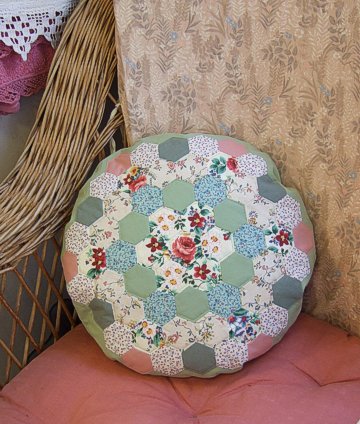
……….. voilà: the finished pillow!
If I had wanted it to be even more cutesy, I could have added a pink ruffle around the edges. Maybe on the next project, ….. because:

…. now I have even more remnants to make into new hexagons.
Patchwork is a never ending hobby!
Eldrid
Filed under: patchwork | Tagged: crafts, english paper piecing, patchwork, pillow, quilt, quilting | 15 Comments »


 KameleonquiltGallery of quiltsPatterns
KameleonquiltGallery of quiltsPatterns